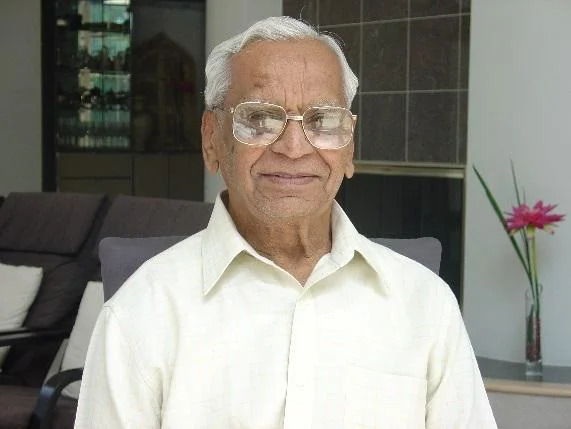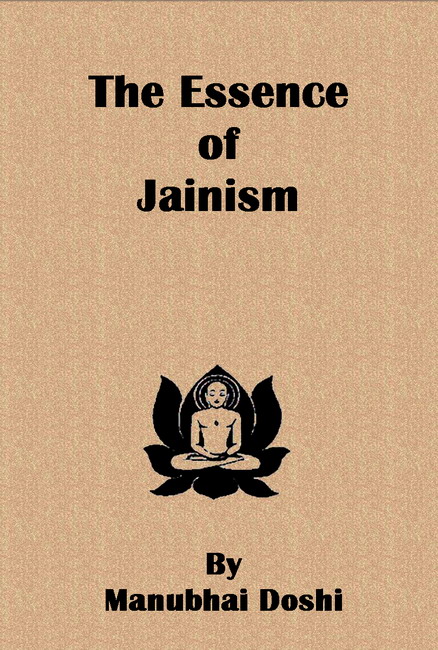We have seen that the essence of religion is to know soul, the true Self, the consciousness. By true Self we mean the Self that stays that lasts, that formless consciousness, which existed prior to the present life and which is going to exist even after the end of this life, that which is eternal. We have to get aware of our own Self in its true state as well as in its present state. In true state it is pure, enlightened, omnipercipient, omniscient, full of vigor and infinite bliss. These inherent attributes of soul are however not experienced in the present state because it is smeared with Karma particles that do not allow full manifestation of those attributes. It’s being bound with Karma particles is known as Karmabandha. We would therefore examine Karmas in respect of their types or Prakrities, duration or Sthiti, intensity or Anubhava (also written as Anubhaga) and areas or Pradesh of soul they get attached.
A: Prakrities or types of Karmas
Karmas are of innumerable types. Lord Umaswati in Tattwarthasutra mentions 97 types in all. Some others specify 148 types. All of them can however be broadly classified into 8 categories as detailed below. Of these the first four are called Ghatiya or of defiling types in the sense that they tend to defile the real nature of soul; they do not allow its true properties to be manifested. The remaining four are called Aghatiya or of undefiling types. Though the soul has to bear their consequences, the operation of these Karmas does not come in the way of manifestation of its true properties.
1) Jnanavaraniya or Knowledge Obscuring Karma
Soul has infinite capacity of knowing anything and everything. We however do not realize this capacity because the knowing property of the soul is obscured by the operation of this Karma. It does not actually reduce its inherent capacity of knowing, but i ts operation remains restricted as the impact of sunlight gets limited when the sky is clouded. Similarly, the operation of this Karma hampers the manifestation of soul’s knowability. This type of Karma is acquired mainly by disregard of preceptors and of the sources of knowledge. Matijnan, Shrutjnan, Avadhijnan, Manahparyayjnan and Kewaljnan are the five divisions of Jnana. Therefore this obscuring Karma is also subdivided into those respective five subdivisions.
2) Darshanavaraniya or Perception Obscuring Karma
Perceiving property of soul gets obscured by the operation of this Karma. This also does not reduce soul’s inherent capacity of perceiving, but restricts its manifestation. This Karma is acquired on account of absence of conviction and loss of faith in the tenets of truth. Chakshudarshan, Achakshudarshan, Avadhidarshan and Kewaldarshan are the four divisions of Darshan. Therefore, this obscuring Karma too is subdivided into those respective four subdivisions.
3) Mohaniya or Deluding Karma
The operation of this Karma deludes the soul by causing wrong perception. On account of this Karma soul fails to perceive the realities and tends to identify itself with the ephemeral body, its worldly connections, acquisitions etc. Thereby the soul happens to perceive the comforts or discomforts of the body and its environments as its own happiness or misery. One feels pleased when such situations are comfortable and strives to maintain them as such. If the situations are not comfortable, he strives hard to change them to his liking and indulges in different types of defilements, when something does not happen to his liking. This arises from our basic ignorance on account of which our Self is smeared with defilements and we indulge in craving and aversion.
This Karma is divided into two parts viz. Darshan Mohaniya and Charitra Mohaniya. The former arises on account of ignorance and the latter from indulgence in defilements. There are 28 subdivisions of this Karma.
4) Antaraya or obstructing Karma
By the operation of this Karma we experience obstacles or obstructions in our effort of Self realization or in our intention to do something good. For instance, there may be a lecture of some enlightened person and we might be intending to attend it. But all of a sudden we may be overcome by some bodily pain, or some of our family members gets sick, or the car gets stuck or any such eventuality may arise preventing us from going to the lecture. It would be possible to conceive of such obstructions arising when we get ready for undertaking some good or desirable activity like charity, extending help to others, enjoying any situation etc. Danantaraya, Labhantaraya, Bhogantaraya, Upabhogantaraya and Viryantaraya are therefore five subdivisions of this Karma.
These are the four Ghatiya Karmas that handicap the full manifestation of the properties of consciousness. Usual pattern among Jain scholars is to describe the category of Antaraya Karma at the end after dealing with Aghatiya Karmas. For convenience sake we have however described it together with other Ghatiya Karmas. Now we turn to Aghatiya Karmas.
5) Vedaniya or situation conferring Karma
By operation of this Karma a living being is endowed with comfortable or uncomfortable situations. Previous good deeds result in this Karma being Shatavedaniya or one that can be undergone with the feelings of happiness and pleasure; evil actions result i n this Karma being Ashatavedaniya or one that can be experienced with the feelings of unhappiness and miseries. Everyone tries to be happy. One however hardly gets results in proportion to his efforts. Only so called lucky ones succeed and get happiness. That apparently inexplicable phenomenon is witnessed on account of the operation of this Karma.
6) Aayu or lifespan determining Karma
As the name suggests, this Karma determines the life span of any particular being. It is not normally possible for any being to live longer or shorter than the period fixed by this Karma. This is irrespective of divine, human, animal or infernal life. There are however exceptional cases where persons endowed with special achievements can reduce the life span by bearing the destined consequences in a shorter period. This is known as Udirana.
7) Naam or physique determining Karma
By the operation of this Karma it is decided what type of body, mind, intellect etc. a living being will have. What we call Gati or state is also decided by this Karma. Divine, human, animal or plant life and infernal life are the four states in which the worldly souls get born from time to time depending upon this Karma.
8) Gotra or status determining Karma
A living being is born in a particular type of family by the operation of this Karma. One is born in a noble or high status or religiously oriented family by virtue of good Karmas. By indulging in evil Karmas, one has to be born in a low status or not religiously oriented family.
B: Sthiti or durations of bondage
Indulgence in defilements is one of the major factors that create bondage of Karma. Duration of a bondage depends upon the intensity of defilement at the time of incurring the bondage. Stronger and intense defilements create bondage of longer duration and weaker defilements result into bondage of short term duration. Thus Sthiti of any bondage is subjective and varies from bondage to bondage. The scriptures however do indicate the maximum and minimum duration of different types of bondage. The Maximum limits for all types of Karmas are super-astronomical and are therefore expressed in Sagaropams which are almost immeasurable. The lowest of the maximum pertains to life span bondage which is of 23 Sagaropams. All other types of bondage run into trillions of Sagaropams. Minimum limits are laid down in terms of Samaya which is infinitesimal part of a second. The minimum durations of different types of bondage range from 9 such Samayas to 12 Muhurtas which amount to 9 hours and 36 minutes.
C: Anubhava or intensity of bondage
Anubhava relates to the strength of bondage and intensity with which its consequences have to be born when the Karma matures and becomes operative. That stage is known as Vipak and its intensity depends upon the degree of defilements that prevailed at the time of bondage. If the degree of defilement is high, the intensity of resulting bondage is more acute. In Jain terminology, this type of bondage, whether of wholesome or unwholesome Karmas, is known as Nikachit or indelible bondage. It does not recede without extending consequences. Soul incurring that bondage cannot strip it off without bearing the consequences. If, however, the degree of defilements, prevailing at the time of bondage, is low; the resulting bondage is loose. The consequences of such bondage at the time of Vipak are relatively light. This type of bondage can be erased by penance or by undertaking activity that tends to destroy such weak bondage. This has however to be done before the bondage gets operative.
D: Pradesh or areas subject to bondage
Pradesh is a very infinitesimal area that would be discussed in a later chapter. Soul comprises innumerable such Pradeshas. When a bondage is incurred, it does not necessarily enter all the Pradeshas of the soul. For instance, when a person gets headache, his other limbs do not experience the pain. On the basis of theory of Karma, this phenomenon can be explained by stating that he had indulged in some unwholesome activity that induced Karma particles to enter only those Pradeshas of soul that abide in the forehead. It is not possible to state which particles of Karmas would be attracted to which parts of soul. They can be attracted to any parts of soul. No part is immune excepting some very subtle Pradeshas which are termed as Ruchak Pradesh.
Theory of Karma is acceptable to all the three Indian philosophies viz. Hinduism, Jainism and Buddhism. The above is a short description of Karma theory according to Jain philosophy. It would obviously raise some questions in the minds of readers. We shall deal with them in a subsequent chapter. In the next chapter we shall deal with the cycle of rebirth which is another aspect of the theory of Karma.
 Manubhai Doshi
Manubhai Doshi
